The 15 best places to visit in Greece

For several months, I had the chance to explore Greece. These are the sites I loved the most and urge you not to miss: A single visit is not enough to discover all the marvels Greece has to offer. Land of the ancient gods, visit Greece for the archaeological treasures which still honour and evoke characters from mythology. On mainland Greece, the first stop should be the capital, Athens and the world renowned Acropolis. Perched on its hill, explore the remains of the Parthenon, the temple devoted to Athena, before visiting the lively neighbourhoods of the town. Then head towards the villages of the Peloponnese for a tour of their cultural riches and the exceptional countryside which will bowl you over. Every town’s identity can be traced through the centuries of Roman, Byzantine and Ottoman heritage. The mild and sunny climate and the idyllic sandy beaches also have their own appeal. Take a boat trip around the Dodecanese and Rhodes, or towards the seaside resorts of Corfu and the Ionian Islands. Culture, relaxation, nature, gastronomy… Greece has it all and more!
Tourist attractions
Our selection of must-see places
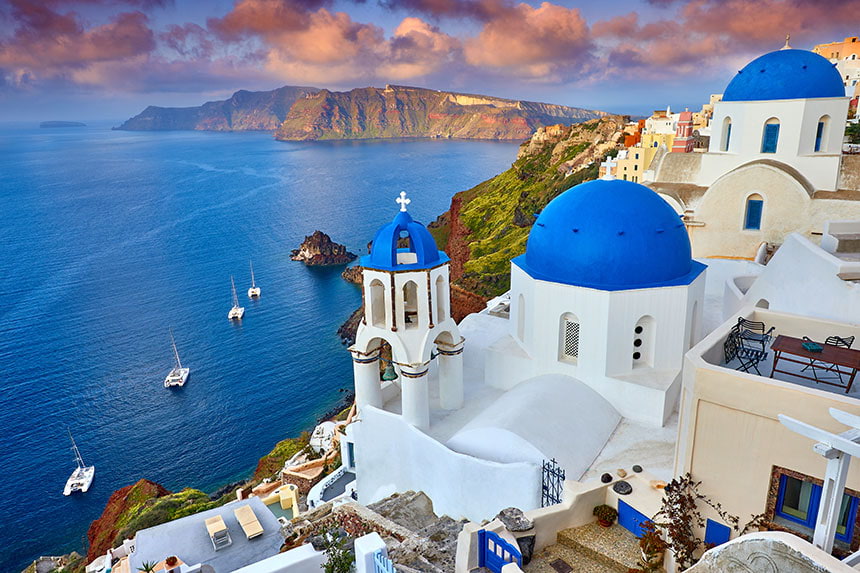

The Cyclades
Nothing evokes escape and a change of scenery like the Cyclades. Located in the south of the Aegean Sea, the Cyclades comprise more than 200 islands of which only 24 are inhabited. A dream destination for many, these essence of these idyllic islands are the beautiful beaches, charming villages of whitewashed houses and azure roofs, exceptional nature and a world-renowned cuisine. Santorini is at the top of the list of essential places to visit with its unique volcanic setting. The road from the capital Fira to Oia takes in typical villages and a panoramic view of the sea and the caldera, the submerged and still smoking crater of the volcano which can be visited by boat. From the heights of Oia, the sunset is simply resplendent. Naxos is the largest of the Cyclades, known for its beaches but also the cultural sites of the capital Chora. Paros is known for its long white sand beaches, fishing villages and marble - the raw material for the Venus de Milo was quarried here. In Mykonos, the gay-friendly island’s clubs draw partygoers from across the globe. But the Cyclades are also peaceful and some have been protected from mass tourism. The archaeology of Delos has granted it UNESCO world heritage status. Amorgos is perfect for walking and Sifnos has its own culinary specialities.
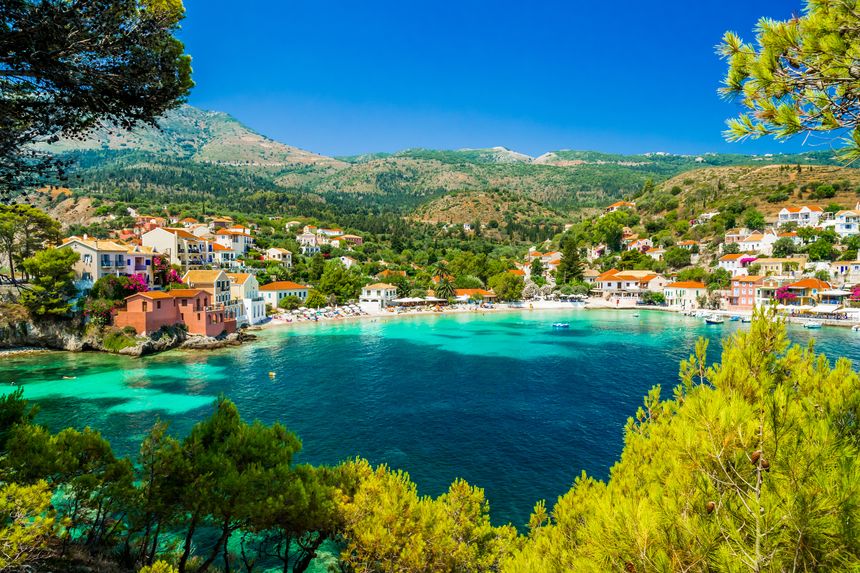

The Ionian Islands
To the west of mainland Greece, the coastline crumbles away into small islands surrounded by the Ionian sea. A little corner of paradise, these islands were captured by the Venetians and retain traces of the Italian influence in their architecture and religious monuments. The typically Mediterranean vegetation of olives, pine trees, vines and lemon trees gives way to the deep blue of the sea. The rugged bays and beaches of the Ionian Islands are among the most beautiful in the world and are favoured by enthusiasts of water sports such as windsurfing and kitesurfing. Thanks to the inter-island crossings, you need not miss any of the magnificent settings: idyllic beaches, monasteries, medieval castles, traditional villages, museums… There’s no reason not to make the Ionian Islands your next stop.
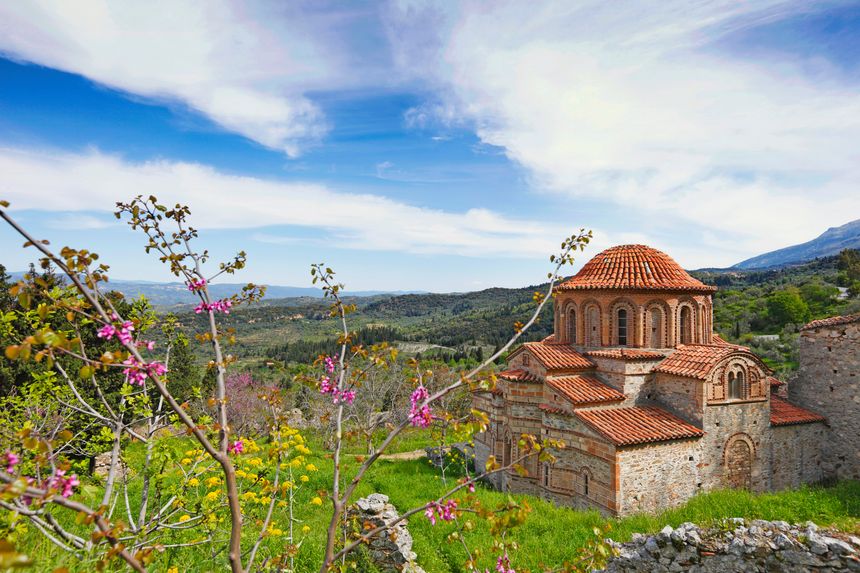

Mystras
Close to Sparta in the south-west Peloponnese, Mystras was built by William II of Villardouin on the side of a hill, to encircle the fortress at the summit. Today, this UNESCO world heritage site guards Byzantine treasures including religious artefacts which have been or are being restored. Start your visit in the lower town in the maze of little streets which eventually climb to the castle. On your way, stop at the Metropolitan Church of Saint Dimitri, the oldest church in Mystras with its three naves, or the 15th century Pantanassa monastery which houses strikingly realistic frescoes. Continue your route as you explore the upper town and discover the palace of the Byzantine emperors who reigned during the 15th and 16th centuries. The finishing line is the Kastro, or fortress from which you can survey the superb panorama across the valley of Sparta. Ample reward for this rather athletic walk.
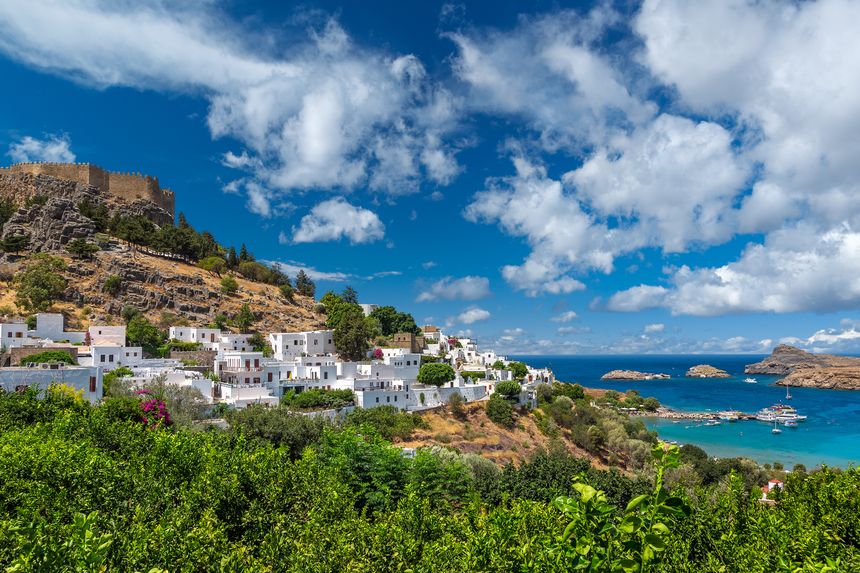

The Dodecanese islands
Close to the Turkish coast, the Dodecanese comprises 12 principal islands and over a hundred isle and islets which are generally uninhabited. Bathed by the Aegean, these islands revel in a mild Mediterranean climate, making them ideal holiday destinations. Sandy beaches and turquoise seas, authentic Greek villages, historic sites which have witnessed the passage of Byzantine and Ottoman civilisations… the islands skilfully weave relaxation with culture. Hop aboard a traditional ‘kaiki’ to discover the unique identity of each island. Rhodes The largest and principle island of the Dodecanese, Rhodes is favoured for its quality of life. Take in the unmissable fortified town which shares its name with the island and was once the seat of the Order of the Knights Hospitaler. Continue to the traditional village of Lindos with its whitewashed houses nestling at the foot of the medieval castle. Finish the day with a well-deserved swim on one of the islands magnificent beaches. There’s an abundance of choice. In ancient times, the port of Rhodes welcomed sailors who would have to pass between the legs of the gigantic statue of Apollo. The famous Colossus of Rhodes was one of the seven wonders of the ancient world, long since destroyed by an earthquake. A voyage around the Dodecanese should take in Symi and its colourful houses, the fishing port of Karpathos, and the wild and remote island of Patmos where the Book of Revelation was written. Finally, stop on the small island of Kos for its bays and transparent water.
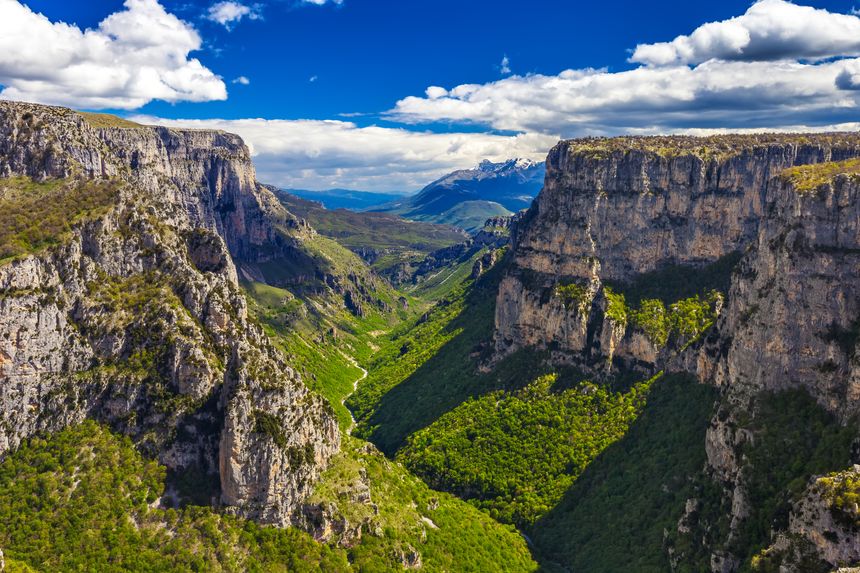

Vikos Gorges
Europe’s largest canyon can be found in the Epirus region of northern Greece. The Vikos Gorge is more than 1,000 metres deep and is the second deepest canyon in the world (only the Grand Canyon is deeper). Over 5 miles long, you can walk from the village of Monodendri to Vikos along a marked path. The scenery is breathtaking, following the blue River Voidomatis which snakes between the vertiginous cliffs. It a truly wondrous natural spectacle
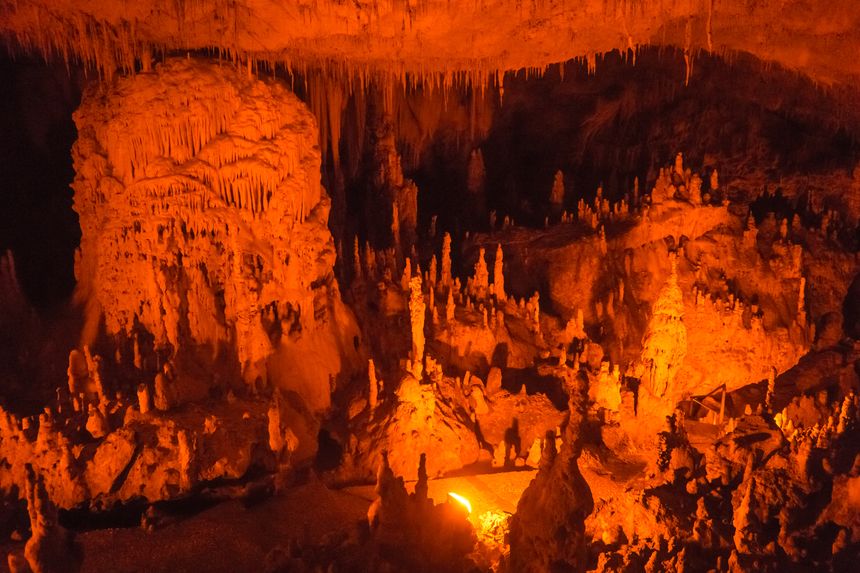

Perama caves
Close to the town of Ioannina, this fabulous geological site awaits visitors several metres below their feet. The labyrinthine Perama caves were formed 1.4 million years ago through erosion of the limestone rocks. Discovered in the 20th century, they were for a long time closed to the public but were used as a bunker during World War II. Today, a guided tour takes visitors down 183 steps into ‘the bowels of the earth’ along an 850 metre trail. The galleries house a sequence of stalactites and stalagmites in extraordinary and mysterious formations. A lovely view of Ioannina’s island and lake await visitors as they leave the caves.
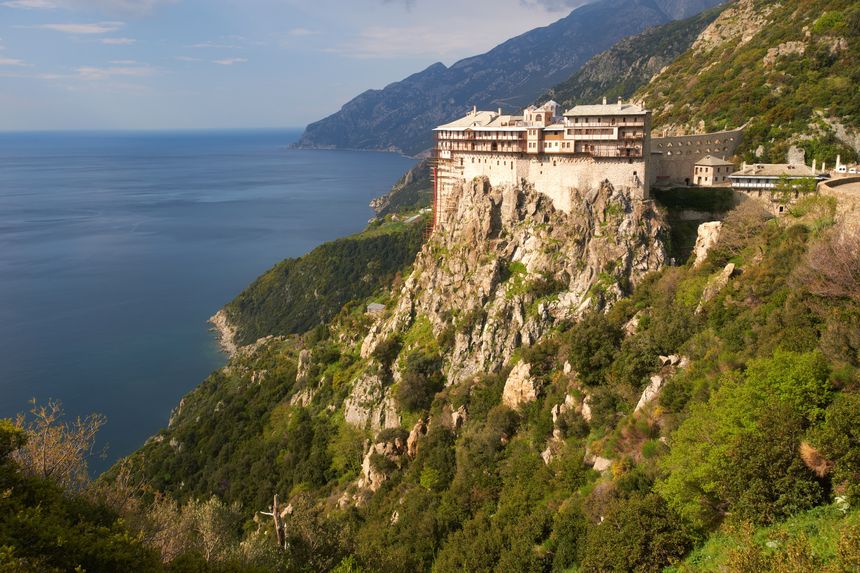

Mount Athos
In Macedonia, the sacred Mount Athos rises 2,000 metres culminating in a number of monasteries in which a community of 200 orthodox monks still live. A popular destination for pilgrims, access is only given by the Mount Athos administrative authorities. A source of vociferous debate, the ‘Holy Mountain’ is strictly forbidden to women, the monks having taken a vow of chastity. The ban even extends to female animals! The rule which has been roundly denounced as sexist and discriminatory has not stopped Mount Athos being listed as a UNESCO world heritage site.
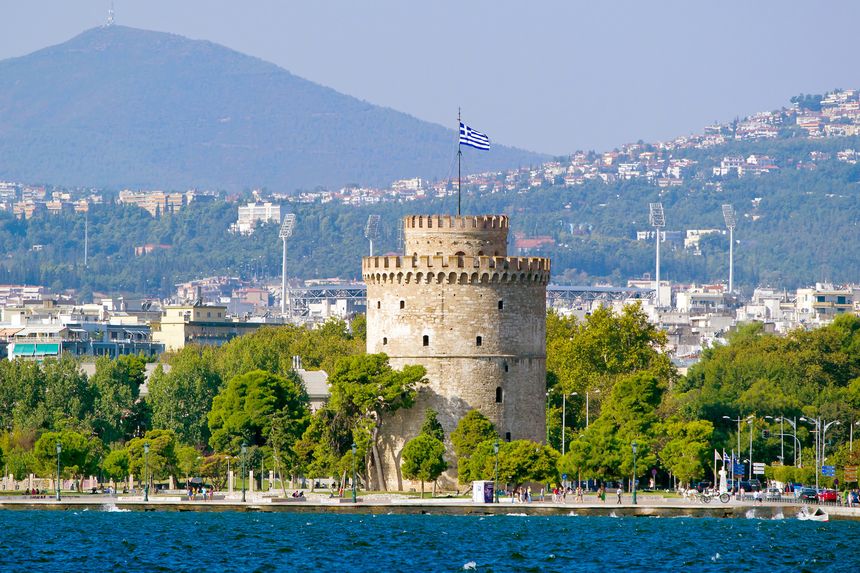

Thessaloniki
Thessaloniki, opening onto the Aegean sea is one of the most important port towns in, Greece. Within its ramparts, the town harbours a rich architectural heritage bequeathed, over the centuries from the Romans, Byzantines and Ottomans. Partly destroyed by an earthquake in the 20th century, the city has found a perfect balance between its past and modernity. The white tower, the emblem of the town, stands proudly on the seafront. In the upper parts of the town, known as Ana Poli, you can follow the traces of different civilisations as you walk through the labyrinth of its coloured streets. There are numerous Byzantine churches and Roman remains. The rotunda, a circular monument, has served as a church and a mosque. It’s history-making the architecture unusual, with, the presence of a minaret. Thessaloniki is a centre for the arts, with major cultural institutions, the museum of archaeology and the Byzantine art museum. Far from being stuck in the past, the city is equally enthusiastic about modern art, photography and cinema. In addition to its museums, the cultural calendar of this dynamic city overflows with festivals, exhibitions, and concerts to say nothing of the numerous bars and clubs which delight the party-goers. The museum: The Thessaloniki Archaeological Museum was inaugurated in 1962 and is one of the most important in the country. Behind the white façade are several permanent collections of artworks recounting major periods in the history of Macedonia and Greece from prehistory to the Romans. One room is entirely dedicated to Macedonian treasures. Objects in gold and silver such as the Deverni Krater, and athletes’ medals from the games held in honour of Alexander the Great.
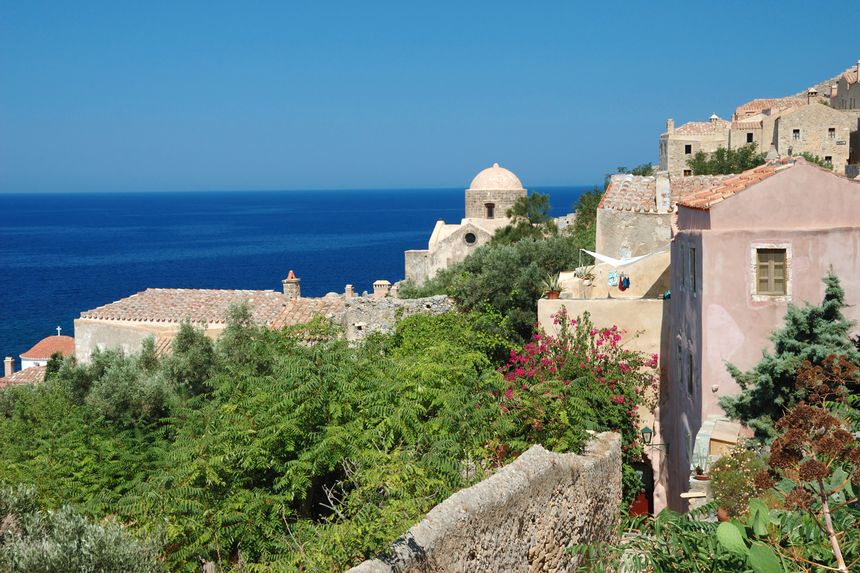

Monemvasia
Located in the south Peloponnese, the fortified town of Monemvasia is one of the most beautiful excursions to take in Greece. Built on a rocky island and linked to the coast by a sea wall, the town appears to be cut off from the world, with an atmosphere all of its own. Nicknamed the ‘Gibraltar of Europe’, this strategically sited natural fortress was coveted by Venetians, Byzantines and Ottomans. Arriving in the old town is like opening magical gates into the medieval world. Turn off your mobile phone to discover it undisturbed. Stroll along the picturesque streets lined with shops, restaurants and cafés and you will leave imbued with the towns romantic atmosphere. The town has a number of charming Byzantine churches (24 to be precise) each as beautiful as the other. The climb to the top of the fortress to watch the sunset is unforgettable. At the end of the day, stop in the town’s old tavernas to sample local dishes and wines, or take a dip in the crystal waters which can be reached via the Portello gate.
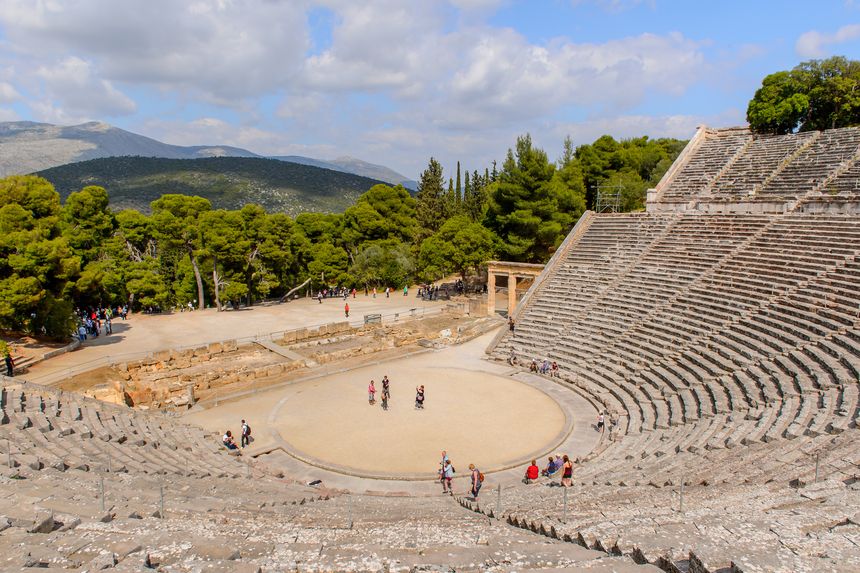

The Asclepieion at Epidaurus
In ancient Greece, an asclepieion was a sanctuary for healing, dedicated to Asclepios the god of medicine. The sick would come from across the country in the hope that a sojourn would cure them. Although several asclepieions existed in Greece, the best known and best preserved is in the town of Epidaurus in the Peloponnese. It is also a UNESCO world heritage site. Traditionally, the sick would be sent here for the baths or to the gymnasium. The sanctuary also includes an ancient theatre with excellent acoustics which could host 14,000 spectators. It’s a unique setting in which it is still possible to attend performances during the Athens-Epidaurus Festival which is held every summer.
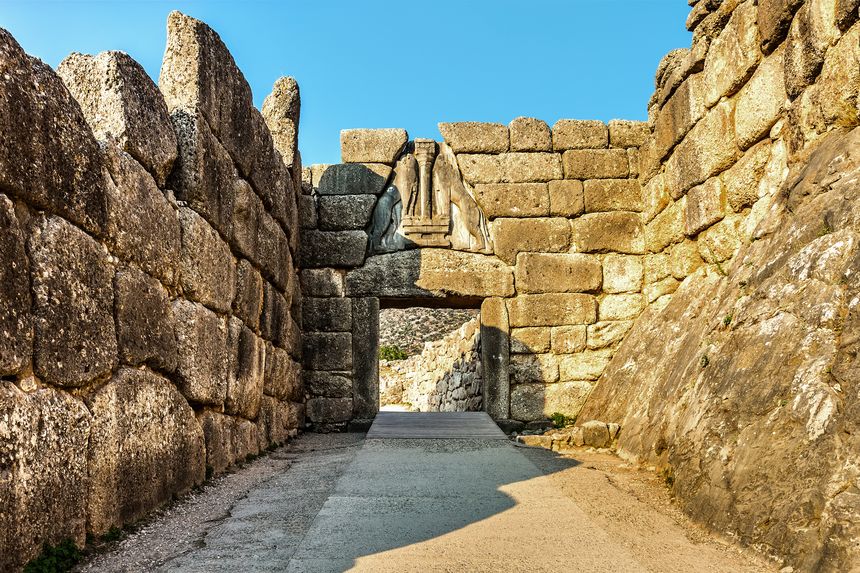

Mycaene
One of the principal sites of Mycenaean civilisation can be found at the top of a hill in Mycaene. Mycaene was founded by the king of Persia before falling into the hands of the Astrides dynasty. Its most famous son is Agamemnon, king and hero of the Trojan war. Returning from the war, he was assassinated by his wife and her lover. In turn, his death was avenged by his son Orestes - a real Greek tragedy! Among the ruins of the ancient citadel (Acropolis) is the imposing Lion’s Gate, guardian of the city. Inside, don’t miss the collection of domed royal tombs discovered by the German archaeologist Schliemann in the 19th century. His discovery also unearthed priceless treasures such as the mask of Agamemnon, now housed in the archaeological museum in Athens. You can also admire the Treasury of Atreus, one of the most beautiful tombs which served as the sepulchre for King Atreus. Finally, it’s impossible to miss the remains of the royal palace, at the highest point of the Acropolis. To complete the visit and burnish your knowledge of the Mycenaean period, the archaeological museum exhibits various objects used in the daily life of the Mycenaeans with other rooms describing their funeral rites.
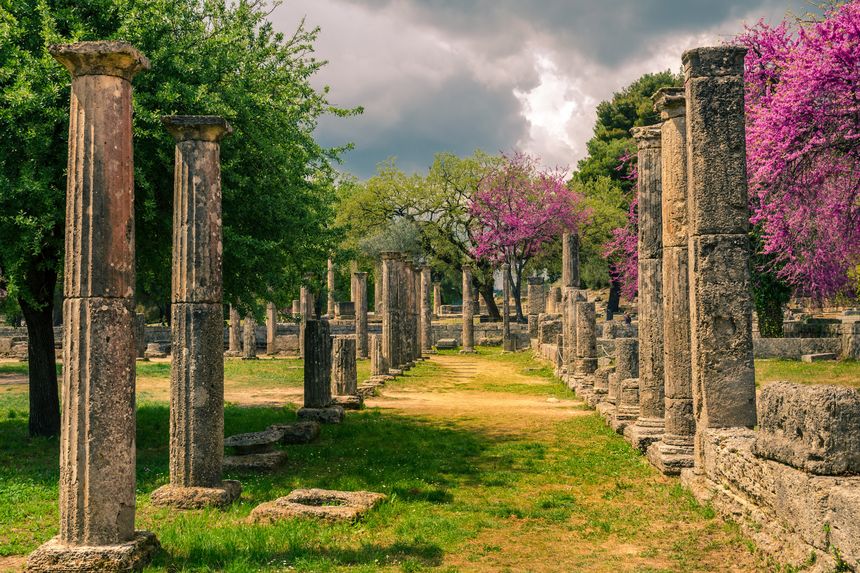

Olympus
The religious capital of ancient Greece, Olympus takes its name from Mount Olympus, home of the gods. Dedicated to Zeus, Olympus is equally well known as the birthplace of the Olympic Games, founded in the 8th century BC. Today, the area retains traces of that period, notably the temples of Zeus and Hera. The former once held the chryselephantine (gold and ivory) statue of Zeus, one of the seven wonders of the ancient world. Nearby, is the workshop of the statue’s sculptor, Phidias. Visitors today can still see the ancient sports facilities such as the stadium, the gymnasium and the Palestra where athletes would train.
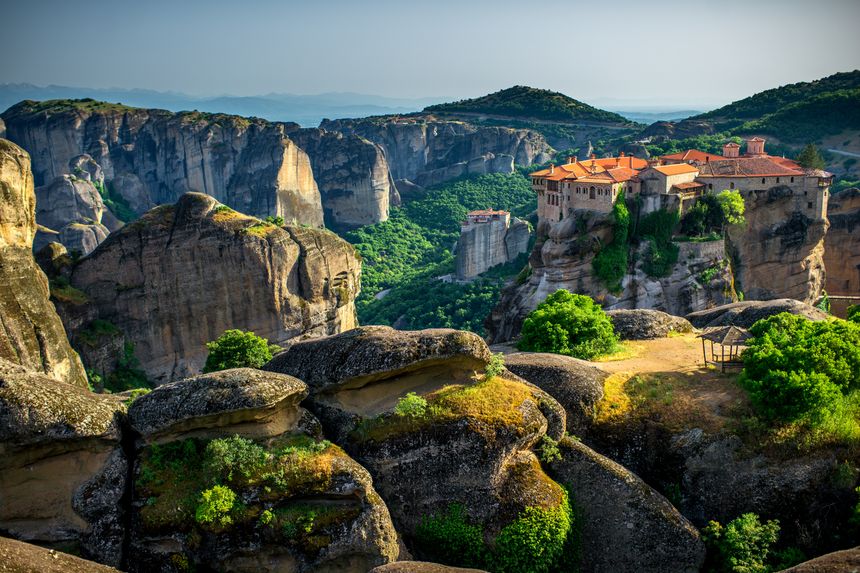

The Meteors
These are geological wonders located on the Plain of Thessaly close to the town of Kalampaka. The Meteora is an impressive formation of towering rocks which have been sculpted by erosion over the centuries. What is fascinating are the numerous monasteries at the summits, built between the 14th and 16th centuries. These sacred places piercing the sky are captivating and seemingly inaccessible as if suspended in the air. Classed as a UNESCO world heritage site, this is an essential stop if you are, travelling in Greece. Fewer now than in the past, six monasteries are open to the public and are still inhabited by monks. Don’t miss a visit to the oldest monastery on the Grand Meteora, the largest and highest, perched at 600 metres. Inside is a church where the faithful come to adore the icons, a museum and a sacristy where the bones of former monks rest.
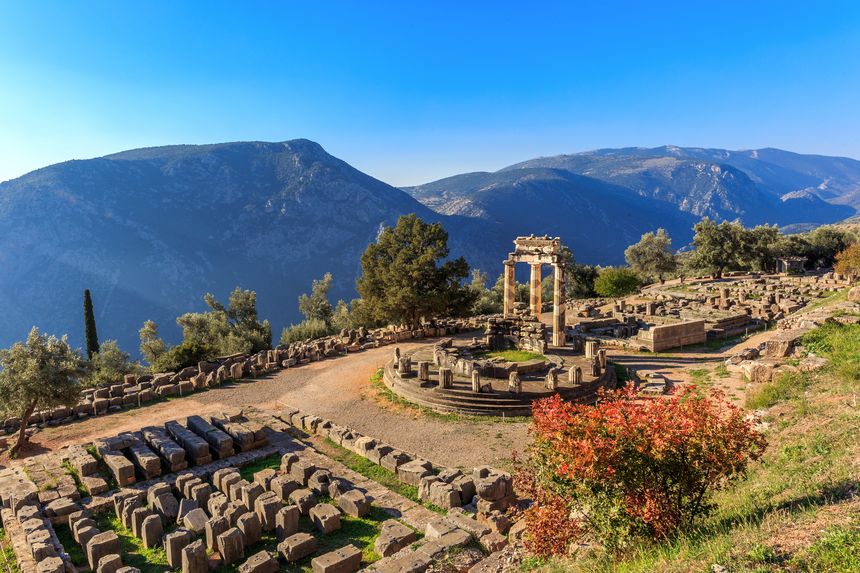

Delphi
Located in the heart of mainland Greece, 100 miles west of Athens, Delphi has a few tales to tell. Among the country’s most important archaeological sites, every stone, every column is suffused with myths and legends dating back to the earliest origins of the town. Zeus, searching for the very centre of the earth sent out two eagles in opposite directions and it was in Delphi their paths finally crossed. Thus the town known as the “navel of the world” was born. The ancient ruins in their natural setting, sheltered by the slopes of Mount Parnassus are a UNESCO world heritage site. The legend of the Oracle of Delphi, a priestess revered by kings who were desirous to see the future, is known throughout the world. Her predictions were given at the centre of this sanctuary dedicated to Apollo. Fascinated by the myth, many curious travellers make the pilgrimage to this sacred site. The Archaeological Museum, Delphi Not to be missed, the archaeological museum in Delphi contains a beautiful collection of items unearthed at the site. Strolling through the museum, each room reveals treasures such as the winged sphinx, the Ephebos statues, the Sifnos frieze and the bronze statue of the Oracle of Delphi dating from the 5th century BC.
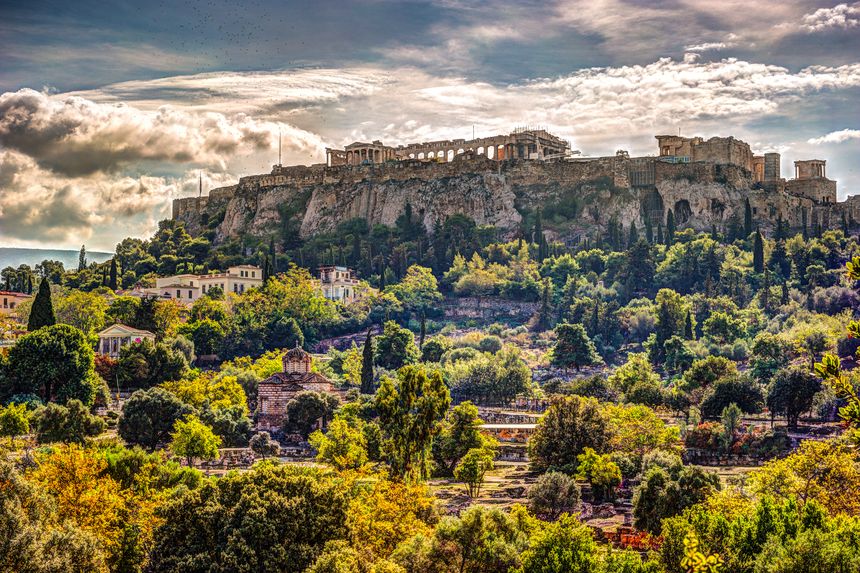

Athens
Cradled by the Aegean, the history of Greece is told through its capital’s monuments and archaeological remains. A city which once was the birthplace of one of the greatest, most prosperous civilisations ever known. The old gods still fascinate and they are ensconced in the culture and heritage of this ancient city. The famous Acropolis dominates the town and should be visited at least once in a lifetime. Constructed 2,500 years ago, the vast collection of archaeological remains, largely dedicated to Athena protector of the city, are a testament to its grandeur. If these magnificent constructions struggle to be maintained in good condition, the shadow of gods and heroes can still be found among them, making them well worth the visit. But far from being preserved in time, Athens is a living city with lively neighbourhoods and visitors should make the most of its welcoming and convivial atmosphere.
You may also like
-
Flights to Greece
All you need to know before buying your plane ticket
-
Tourist maps
Must-see and secret places chosen by our experts from Greece.
-
Hotel or vacation rental?
Find your dream accommodation in Greece at the best price...
-
When to go?
Be sure to visit Greece at the best time of year!
and why not...
 Crete
Crete




